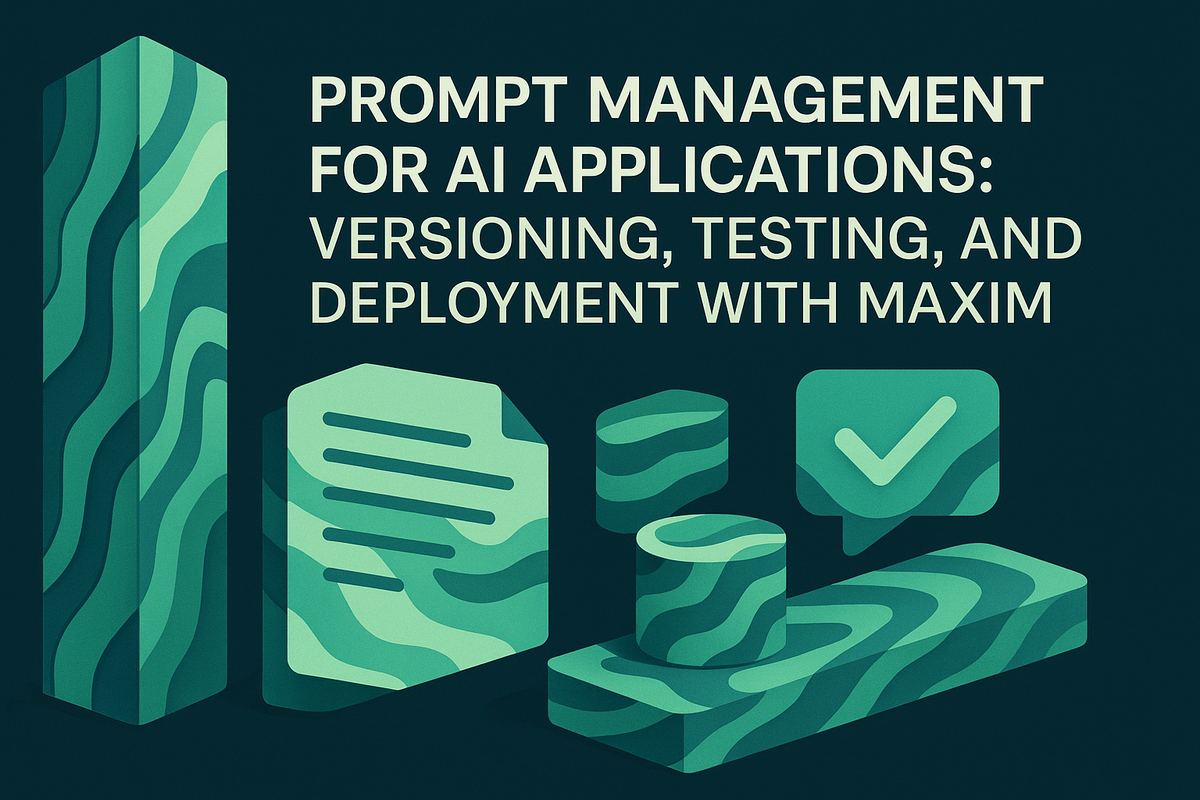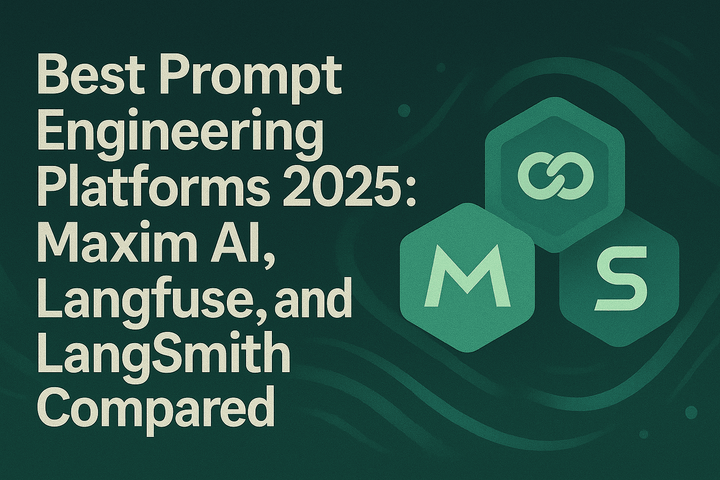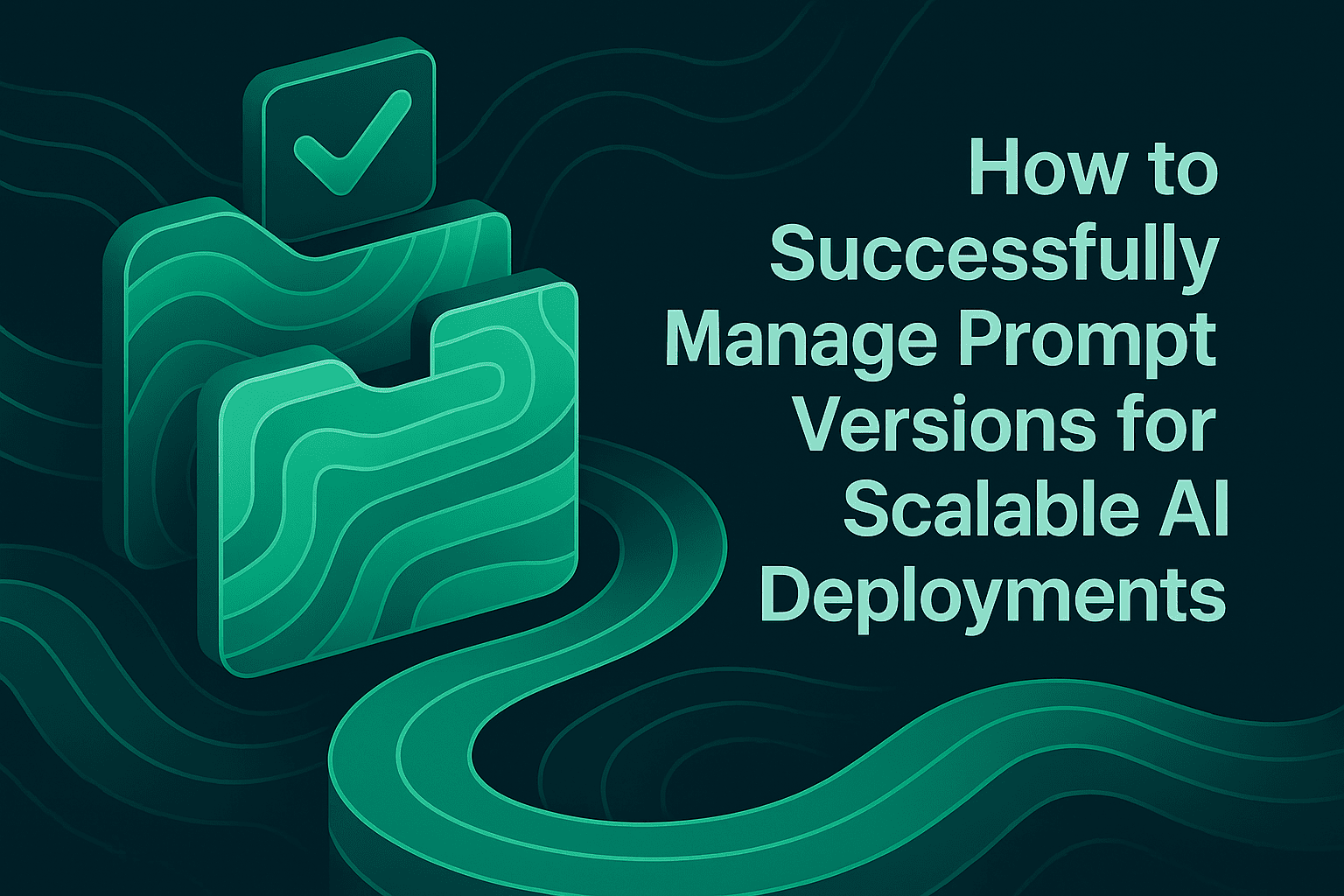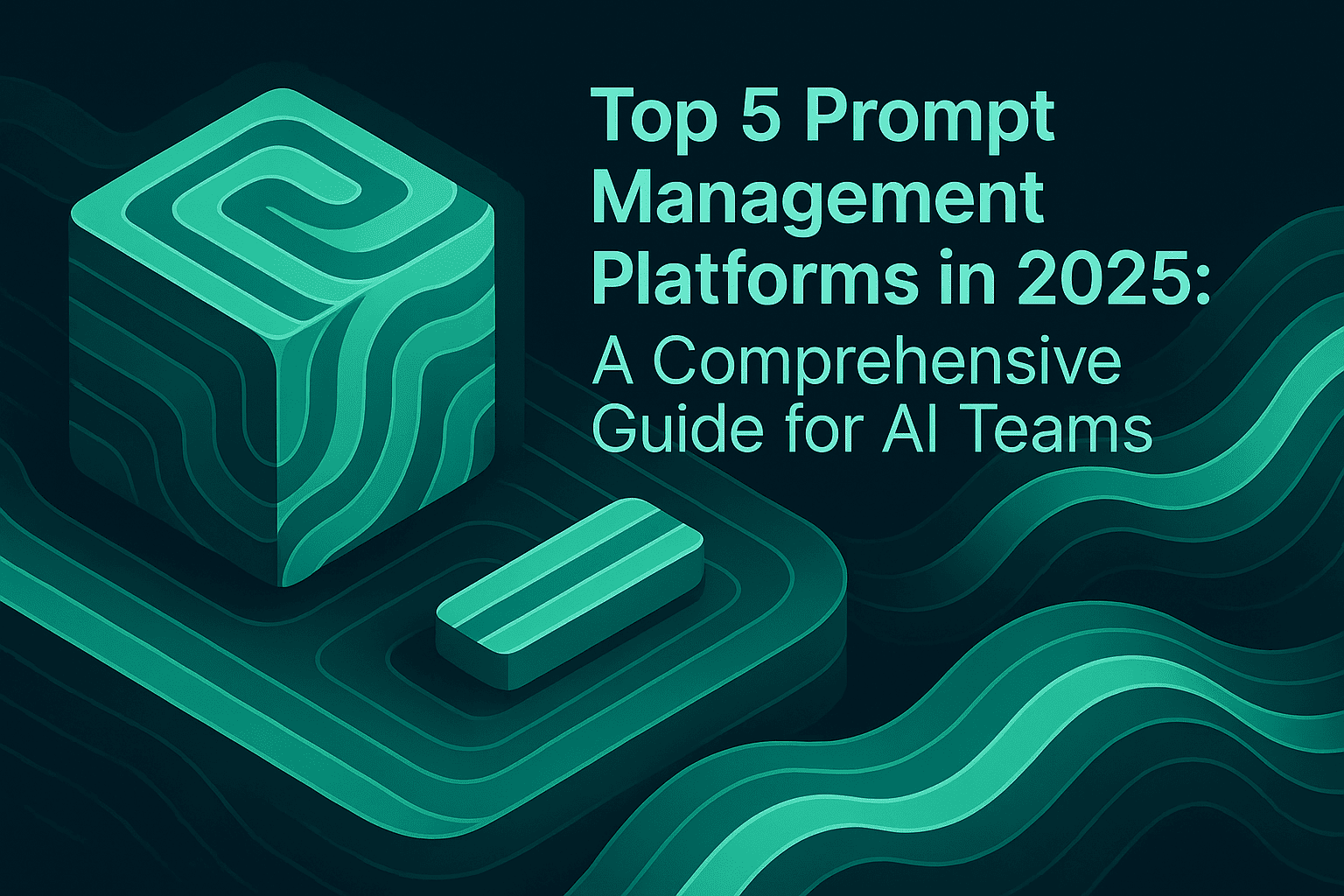Prompt Management for AI Applications: Versioning, Testing, and Deployment with Maxim AI

Managing prompts well is foundational to building reliable AI applications. As systems evolve from a single prompt to multi-agent workflows with retrieval, tool calls, and dynamic variables, teams need a structured process to iterate, evaluate, and deploy, without sacrificing speed or quality. This guide presents a practical, end-to-end approach to prompt management using Maxim AI, aligning with modern engineering practices for prompt engineering, LLM evaluation, AI observability, and AI reliability.
Why Prompt Management Matters for AI Quality
Prompts act as specifications for model behavior. In production, even minor prompt changes can impact output quality, latency, and cost. Research consistently shows prompt engineering affects performance across reasoning, task completion, and consistency dimensions (source, source). For retrieval-augmented generation (RAG) systems, quality depends not only on model prompting but on retrieval precision, recall, and faithfulness (source, source). For agentic workflows, tool-call correctness and instruction-following are critical for robust execution (source, source, source).
Maxim provides an end-to-end framework that integrates prompt engineering, evals, agent debugging, LLM monitoring, and deployment, enabling teams to continuously improve AI quality with trustworthy AI practices. The sections below outline a practical lifecycle and link to relevant resources.
Build and Iterate: Prompt Playground
Start in the Prompt Playground to experiment across models, messages, parameters, and tools. You can select open-source, closed, or custom models, configure parameters (temperature, max tokens, topP, stop sequences), and directly edit system, user, and assistant messages. Learn more in the Prompt Playground.
- Use variables with
{{ }}to represent dynamic values; connect them to context sources for RAG. Details in Using variables in Playground. - Attach prompt tools (schema-only or executable) to test agent workflows and tool choice accuracy. See Prompt Tool Calls.
- Enable MCP (Model Context Protocol) to run tools in agentic mode; the model will iteratively call tools until it produces a response. Reference MCP (Model Context Protocol).
For RAG systems, attach a Context Source and evaluate retrieved chunks and their relevance directly from Playground and test runs. Steps are outlined in Prompt Retrieval Testing. RAG evaluation should consider precision, recall, relevance, and responsiveness at scale (source, source). For robust RAG debugging, ensure chunk inspection and evaluator reasoning are part of your workflow.
Organize: Versions, Sessions, Folders, and Tags
Maintain prompt versioning to track changes, run comparisons, and publish versions used for testing and deployment. You can publish new versions with message selections and descriptions, then compare differences including configuration and parameter changes. See Prompt Versions.
- Use sessions to save complete playground state with variables and conversation messages, ideal for ongoing experiments or cross-functional reviews. Reference Prompt Sessions.
- Organize prompts in folders aligned to applications or teams, and apply tags as metadata for retrieval via SDK or deployment filters. Details in Folders and Tags.
Together, prompt versioning and sessions enable repeatable experimentation with clear ownership and a reliable history, key to prompt management and prompt versioning at scale.
Evaluate: Bulk Tests, Human-in-the-Loop, and Optimization
Move beyond ad-hoc checks by running comparison experiments at scale. In Maxim, you can select multiple prompt versions or models, choose a dataset, add evaluators, and review side-by-side summary and detailed results with latency, cost, and token usage. This is essential for LLM evals, agent evaluation, and model evaluation. See Prompt Evals and Prompt Testing Quickstart.
- Use human evaluators for last-mile quality and nuanced judgments (e.g., safety, brand voice, domain-specific accuracy). Set up rater workflows via report columns or email, with sampling to focus SME time on the hardest cases. Learn more in Human Annotation. Human-in-the-loop evaluation is a recognized best practice for auditing and reducing hallucinations (source, source).
- Optimize based on real test data: Maxim's Prompt Optimization runs iterative improvements guided by selected evaluators, producing an optimized version with detailed reasoning and side-by-side comparisons. Reference Prompt Optimization.
This unified evaluation framework allows teams to quantify improvements and regressions, improving AI reliability and AI quality with programmatic, statistical, and LLM-as-a-judge evaluators.
Validate Agent Workflows: Tool Calls and MCP
For agents that use tools or function calls, validate both tool selection and argument correctness:
- In Playground, attach tools, send prompts with tool usage instructions, and inspect assistant decisions and tool execution outcomes. See Prompt Tool Calls.
- Run tool-call accuracy evals at scale by preparing datasets with expected tool calls; review binary accuracy scores and message logs. Reference Prompt Tool Calls.
Recent research demonstrates that prompt formats, instruction-following consistency, and decision-token strategies can significantly improve function calling reliability (source, source). Use these insights to craft robust schemas, enforce format requirements, and log structured tool outputs for agent tracing and agent debugging.
Deploy: Version Control, A/B Rules, and SDK Retrieval
When a prompt meets your quality bar, deploy without code changes using rule-based conditions and variables (e.g., environment = prod, customer segments, internal testing cohorts). This enables safe A/B testing and progressive rollouts with AI gateway or application policies. Learn more in Prompt Deployment.
- Configure deployment variables (select, multiselect) and apply operators like equals or includes to control targeting rigor.
- Fetch the right prompt with SDK QueryBuilder, filtering by deployment variables and tags, ideal for multi-tenant or environment-aware applications. Usage examples are in Prompt Deployment and Folders and Tags.
This architecture directly supports agent observability and model monitoring by ensuring reproducible prompt retrieval and clean separation of environments and customer contexts.
Connect the Lifecycle: Experimentation, Simulation, Evaluation, Observability
Maxim's platform spans the full lifecycle so teams can move fast with confidence:
- Experimentation: Advanced prompt engineering with Playground++ for rapid iteration, deployment variables, and model comparison. Explore Experimentation.
- Simulation: AI-powered agent simulations to evaluate multi-step behaviors, trajectory choices, and failure points across personas. Details in Agent Simulation & Evaluation.
- Evaluation: Unified machine and human evals for comprehensive LLM evaluation and AI evals across datasets and versions. Learn more at Agent Simulation & Evaluation.
- Observability: Real-time logs, distributed tracing, and automated checks for AI observability and LLM monitoring in production. See Agent Observability.
Maxim's design emphasizes cross-functional collaboration so engineering and product can share the same ground-truth results and dashboards. Flexible evaluators, deterministic, statistical, and LLM-as-a-judge, plus human review make it straightforward to align systems with human preference over time.
Optional: LLM Gateway
If you need multi-provider routing, caching, or tool access centrally, Maxim offers Bifrost, a high-performance LLM gateway:
- Unified OpenAI-compatible API across providers with automatic failover and load balancing
- Semantic caching, multimodal streaming, governance, and observability
- MCP-enabled tool usage for filesystem, web, and data access
Explore Bifrost features:
This layer complements prompt management by improving AI gateway resilience and performance while enabling LLM router strategies for reliability and cost.
Best Practices for Prompt Management
- Anchor changes in versions and sessions to ensure reproducibility and fast iteration. Use Prompt Versions and Prompt Sessions.
- Evaluate comprehensively with datasets and evaluators, combining programmatic checks, LLM-as-a-judge, and human-in-the-loop for nuanced cases. See Prompt Evals and Human Annotation.
- For RAG, explicitly test retrieval quality with evaluators for precision, recall, relevance, and faithfulness. Connect context sources and inspect chunk-level details. Reference Prompt Retrieval Testing and surveys on RAG evaluation (source, source).
- For agents, validate tool-call selection and argument formatting and log structured messages for debugging. Use Prompt Tool Calls and consider instruction-following constraints in schemas (source).
- Deploy via rule-based variables to reduce risk and enable A/B cohorts without code changes; retrieve with SDK filters to keep environments clean. Learn more in Prompt Deployment.
- Tie everything together with observability and tracing for production, alerting on regressions and curating datasets from logs. See Agent Observability. Research on distributed tracing underscores its value for debugging complex systems at scale (source, source).
Putting It All Together
Managing prompts is not just text editing, it is a disciplined engineering workflow. Maxim's full-stack approach helps teams build trustworthy AI: from rapid prompt engineering and simulations, to rigorous evals, human review, and production-grade observability. Whether you are debugging RAG pipelines, refining agent tool use, or deploying prompts to specific customer cohorts, these capabilities will accelerate delivery and improve AI reliability.
Ready to manage your prompts with a platform built for engineering and product teams?
- Request a demo: https://getmaxim.ai/demo
- Sign up and get started: https://app.getmaxim.ai/sign-up


